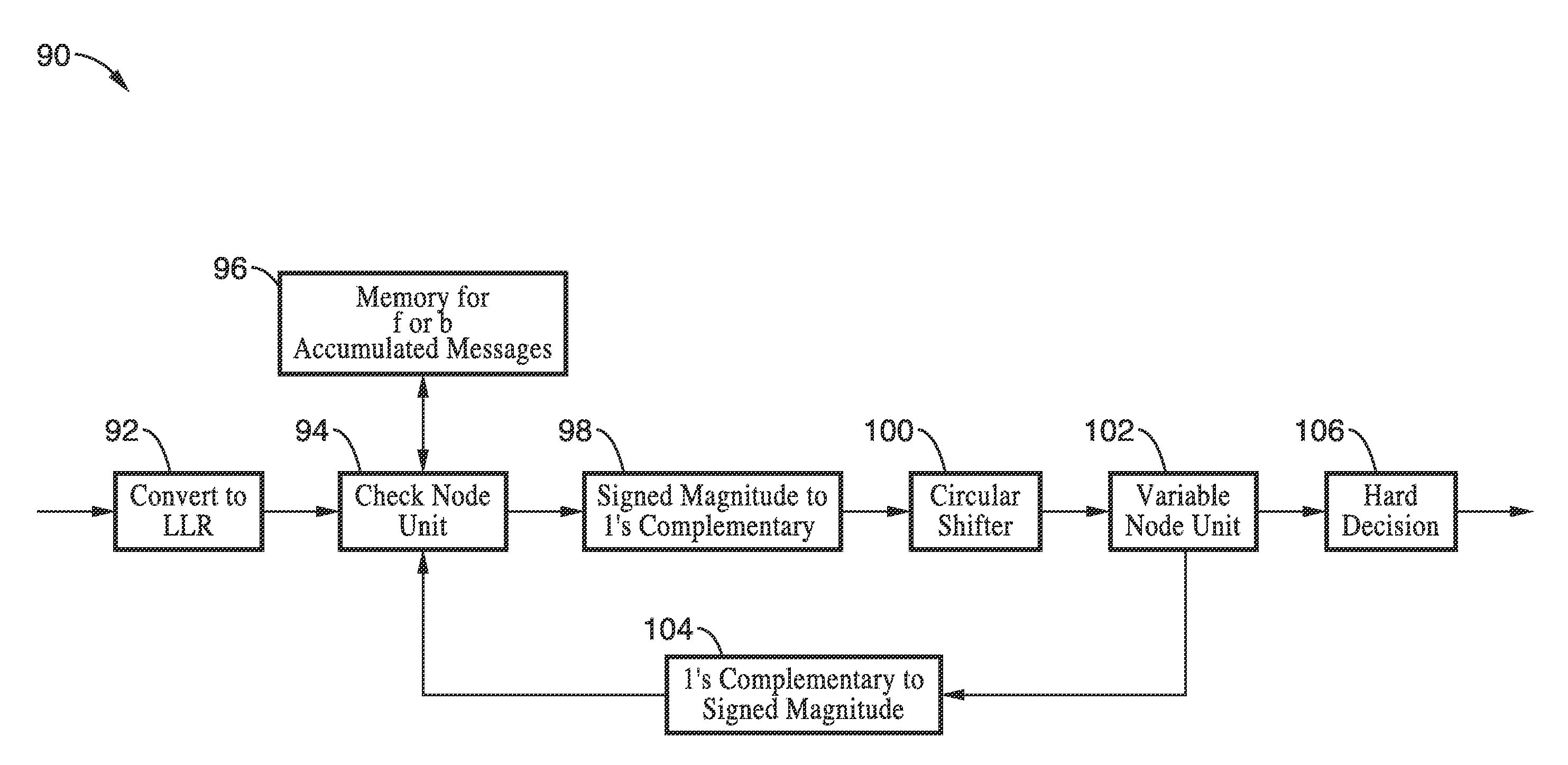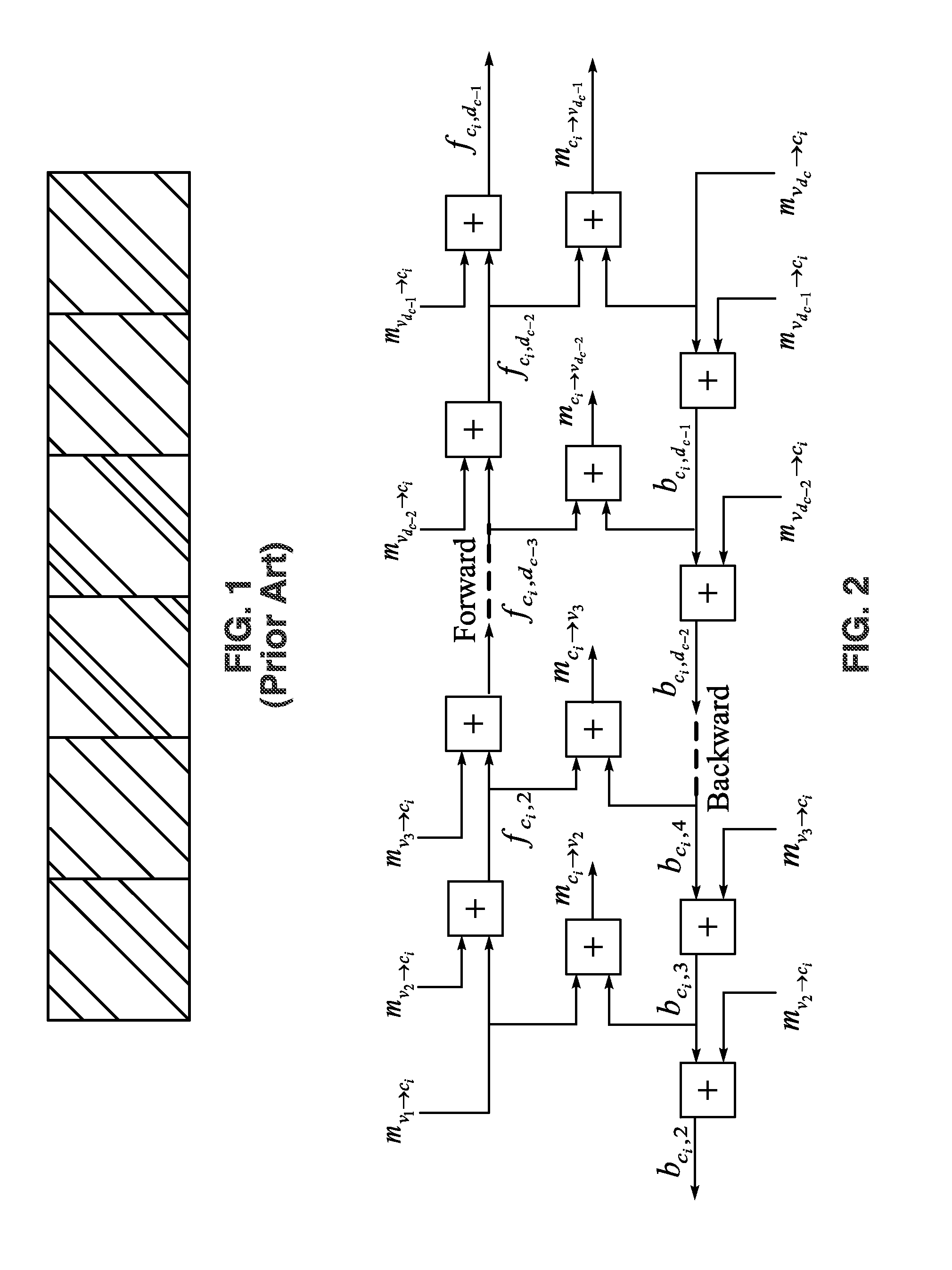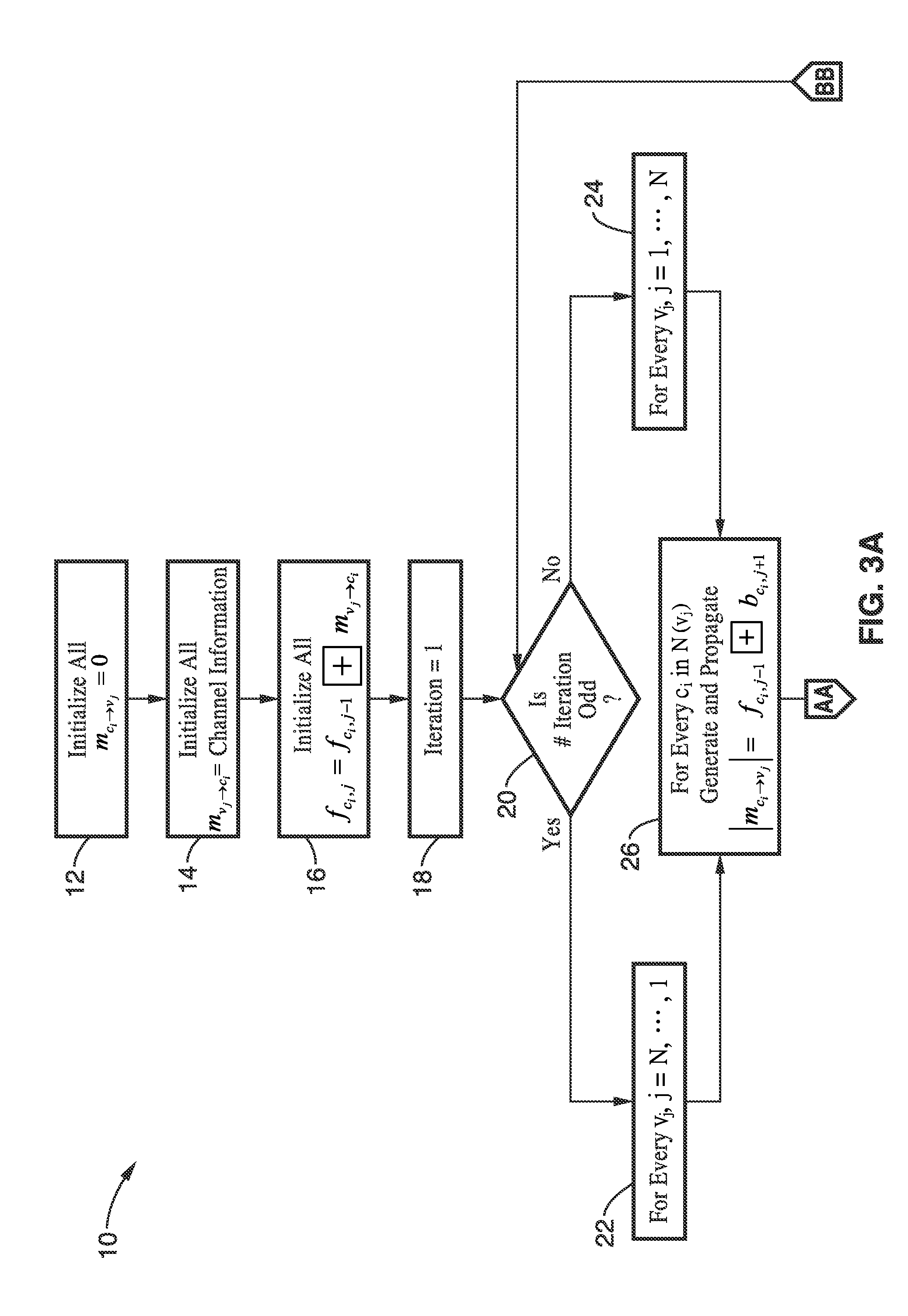Lower-complexity layered belief propagation decoding LDPC codes
a low-complexity, layered belief technology, applied in the direction of code conversion, code conversion, instruments, etc., can solve the problems of v-lbp solutions having a higher complexity per iteration, outperform traditional flooding scheduling for a large number of iterations, and improve convergence speed, etc., to achieve rapid convergence
- Summary
- Abstract
- Description
- Claims
- Application Information
AI Technical Summary
Benefits of technology
Problems solved by technology
Method used
Image
Examples
embodiment 10
[0079]FIG. 3 (as well as Algorithm 2) formally presents an embodiment 10 of the Z-LBP algorithm. Referring to the figure, the decoder first initializes all messages 12, as well as channel information 14, and fc,j 16 of every check-node. Iteration count is initialized 18 prior to commencing the iteration loop. Within the iteration loop, a check for even / odd iteration count is performed 20. For the first iteration, as well as all the odd iterations, a sequential update of variable-nodes vj, j={N, . . . , 1} in a backward fashion 22. All the messages mci→vj destined to the same variable-node vj are generated 26 using fci,j−1bci,j+1. Then, for odd iterations as checked by block 28 the decoder generates 30 all the messages mvj→ci from the same variable-node vj. The decoder then calculates all the bc,j for every ci that is a neighbor of variable-node vj using bci,j+1mvj→ci. Iteration count is advanced in block 34 and stop rules checked in 36, and if the stop rules are met then iterations ...
embodiment 50
[0089]FIG. 8 illustrates the above modification of FIG. 3, showing a partially-parallel embodiment 50 of the Z-LBP algorithm. Referring to the figure, the decoder first initializes all messages, channel information and fc,j of check-nodes as per blocks 52, 54 and 56. Iteration count initialized 58 and iteration loop commenced 60 with a check for even / odd iteration. For the first iteration, as well as all the odd iterations, a sequential update of variable-nodes in the sub-matrix SMj, j={Nmat, . . . , 1} in a backward fashion 62. All the messages mci→vj destined to the same sub-matrix node SMj are generated 66 using fci,j−1bcij+1. Then, for odd iterations as checked by block 68 the decoder generates 70 in parallel all the messages mvj→ci from the same variable-node. The decoder then calculates all the bc,j for every ci that is a node neighbor using bci,j+1mvj→ci. Iteration count is advanced in block 74 and stop rules checked in 76, and if the stop rules are met then iterations are co...
embodiment 90
[0095]FIG. 12 illustrates a system hardware architecture for an example Z-LBP embodiment 90. Upon receiving channel information the first component 92 converts received signal into Log-likelihood Ratio (LLR). The embodiment assumes yj is a received signal through Gaussian channel, whereby the converting equation becomes,
Cvj=log(p(yjvj=0)p(yjvj=1))=-2yjσ2.
[0096]After converting channel information to LLR, the decoder can start computing fc,j for initialization in the check-node unit. The check-node unit is composed of Soft-XOR operator, which is described below in relation to the example implementation of FIG. 13.
[0097]The check-node unit 94 takes accumulated messages fc,j or bc,j from the memory 96 to execute the Soft-XOR operation. Then, the decoder replaces out-of-date fc,j or bc,j memory values with the latest fc,j or bc,j values. The memory size of forward or backward accumulated messages corresponds to the number of edges, NE, in the bi-partite graph as described in a prior sec...
PUM
 Login to View More
Login to View More Abstract
Description
Claims
Application Information
 Login to View More
Login to View More - R&D
- Intellectual Property
- Life Sciences
- Materials
- Tech Scout
- Unparalleled Data Quality
- Higher Quality Content
- 60% Fewer Hallucinations
Browse by: Latest US Patents, China's latest patents, Technical Efficacy Thesaurus, Application Domain, Technology Topic, Popular Technical Reports.
© 2025 PatSnap. All rights reserved.Legal|Privacy policy|Modern Slavery Act Transparency Statement|Sitemap|About US| Contact US: help@patsnap.com



